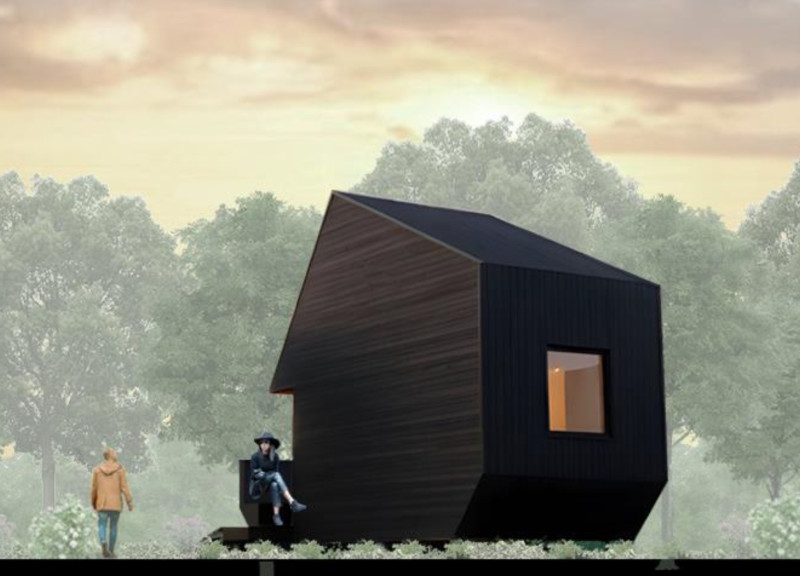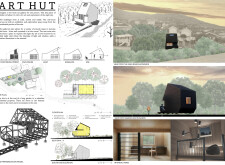5 key facts about this project
### Overview
Located at the end of a garden within a suburban residential area, the Art Hut is a one-room art gallery designed for solitary use. With a footprint of approximately 14 square meters, it serves as both a space for artistic expression and a platform for celestial exploration. The strategic positioning of the structure allows for views of the Atlantic Ocean to the west and mountains to the east, creating an enriching context for reflection and interaction with nature and art.
### Spatial Configuration and Materiality
The architectural form of the Art Hut features a pitched roof that culminates in a peak, reminiscent of traditional structures while maintaining a contemporary aesthetic. Its exterior is clad in black timber, which offers a striking contrast to the surrounding greenery. This choice of material not only ensures structural integrity but also fosters a harmonious relationship with the natural environment. Full-height windows on the southern facade allow natural light to penetrate the space, creating a dynamic interplay of illumination that enhances the viewer's experience of both the artworks and the surrounding landscape.
The interior layout is designed for flexibility, accommodating varied art installations while promoting fluid movement throughout the space. This adaptability is crucial for user engagement, as the design encourages interaction with both the displayed art and the celestial environment beyond. High-level windows serve as observation points, immersing visitors in an atmosphere that emphasizes the relationship between art and the night sky.
### Sustainability and Environmental Integration
The Art Hut incorporates sustainably sourced materials, primarily timber, aligning with eco-friendly architectural practices. Its minimal footprint reduces land disturbance while maximizing the potential of the site’s natural features. By integrating the structure with its surroundings, the design reflects a commitment to ecological stewardship, reinforcing the connection between artistic endeavors and the natural world. The careful arrangement of windows not only enhances natural light but also facilitates a dialogue with the external environment, blending the experiences of art appreciation and stargazing.



















































